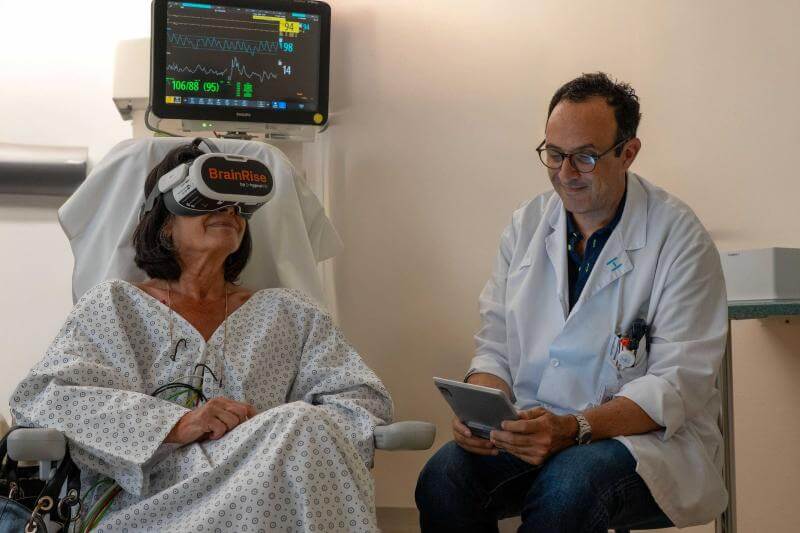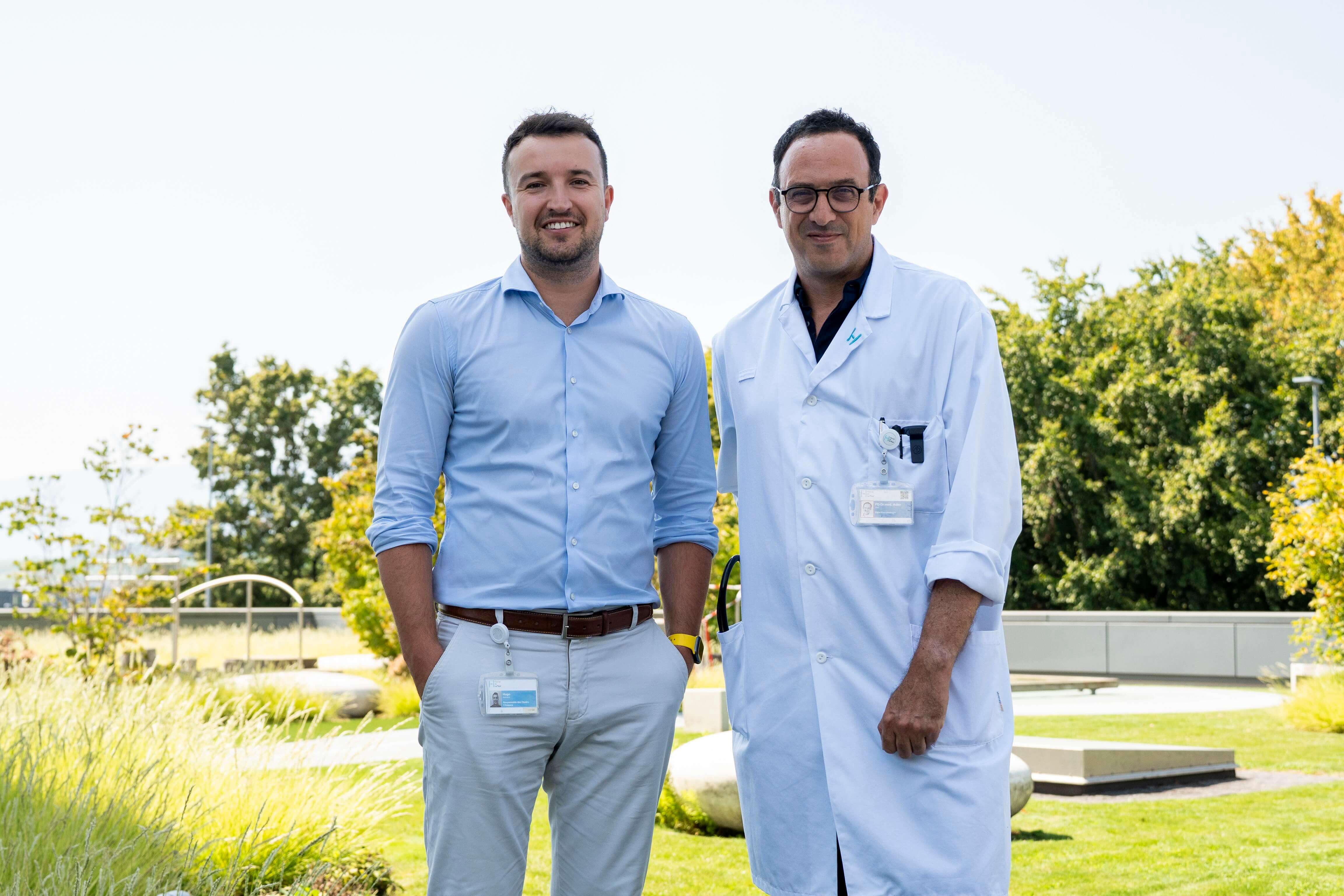
Medical virtual reality, and more specifically immersive hypnosis, can serve as a complementary tool for managing certain refractory symptoms. These technologies combine soothing visual immersion with hypnotic suggestions designed to influence the perception of bodily sensations. In the case of persistent dyspnea (breathing discomfort causing shortness of breath during light exertion, but which can even occur at rest when the disease reaches an advanced stage), the goal is to help the patient regain control of their breathing, reduce the anxiety that accompanies it, and improve overall well-being.
This observation is based on an “N-of-1” clinical trial design. This methodology consists of evaluating the effect of a treatment on an individual patient, repeatedly alternating between experimental and control conditions. This type of research reduces therapeutic uncertainties when the effect of the treatment varies from one individual to another with high internal validity, thus enabling a truly personalized treatment to be offered. In this study, patients suffering from persistent dyspnea were exposed to virtual reality hypnosis (VRH) sessions and pleasant visual immersions without hypnotic content. This approach made it possible to compare the effect of immersive hypnosis with that of simple distraction under controlled conditions that are directly applicable in clinical practice.

Hugo Bothorel (Responsable de la recherche clinique et adjoint à la Direction médicale) et PD Dr med Dan Adler (Pneumologue)
Hypnosis in virtual reality was achieved using the HypnoVR device. This device combines an immersive headset, noise-canceling headphones, and an app that allows users to choose soothing environments such as a walk in the forest or a peaceful flight. In addition, predefined hypnotic scripts are played during the session to guide the patient into a state of deep relaxation. This combination aims to alter the subjective experience of breathing and calm the neural circuits associated with the perception of dyspnea.
The results: a variable response but shared well-being
The results are interesting and clearly illustrate the importance of personalizing treatments. In some patients, immersive hypnosis sessions lead to a significant reduction in the intensity of dyspnea and a marked improvement in well-being. These patients generally express real relief during the sessions and wish to continue the experience in a hospital setting while they gradually recover from a respiratory exacerbation. In other patients, VRH did not reduce the intensity of dyspnea. However, it did contribute to a marked improvement in overall well-being, demonstrating that this technology can provide relief even in the absence of a direct effect on dyspnea.
Prospects: HVR in respiratory rehabilitation
Our experience shows that patients are open to these solutions, especially when they are offered in a safe and supervised environment. While the prospect of using VRH at home may still seem distant for some, its use in hospitals or rehabilitation centers appears promising.
In line with this trend, La Tour Hospital has chosen to integrate virtual reality hypnosis into the care pathway for pulmonology patients. This innovative approach aims to offer complementary support to conventional treatments and improve the quality of life of patients suffering from persistent dyspnea.
“We have found that virtual reality hypnosis now provides real respiratory benefits and improves overall well-being in carefully selected patients. It usefully complements conventional therapeutic approaches and helps patients regain a sense of control over their breathing,” explains PD Dr. Dan Adler, pulmonologist at La Tour Hospital.
In short, virtual reality hypnosis appears to be an innovative avenue for enriching the therapeutic arsenal against persistent dyspnea. While its direct effectiveness on dyspnea still needs to be confirmed by further studies, its benefits in clinical practice are already apparent.